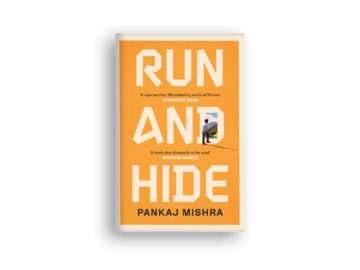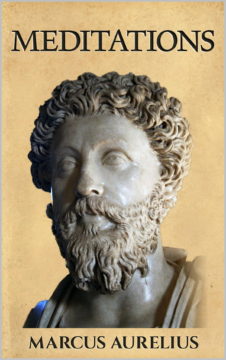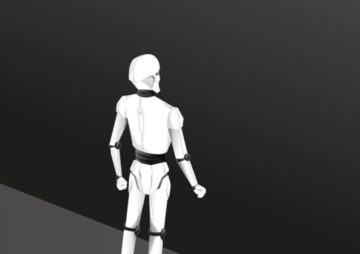Chris Moss in Prospect Magazine:
 How has India’s emergence as an economic power reshaped its cultural life? What is the moral price of literary fame? Are the artistic and publishing worlds merely branches of international finance? These are some of the big questions tackled in Pankaj Mishra’s new novel—his first in 20 years. The early chapters read like a series of lofty essays smuggled into a rambling story. But it develops into a multi-layered novel, bursting with ideas.
How has India’s emergence as an economic power reshaped its cultural life? What is the moral price of literary fame? Are the artistic and publishing worlds merely branches of international finance? These are some of the big questions tackled in Pankaj Mishra’s new novel—his first in 20 years. The early chapters read like a series of lofty essays smuggled into a rambling story. But it develops into a multi-layered novel, bursting with ideas.
Arun and Aseem are two young working-class men from railway towns who get into the prestigious Indian Institute of Technology. After graduation, they both ride the wave of globalisation. But while their fellow students follow the career path of real-life business “god” Rajat Gupta—the MD of McKinsey who was later imprisoned for securities fraud—Arun becomes a respected Hindi translator and Aseem a successful Anglophone writer, editor and all-round impresario. Both are drawn into the orbit of brilliant and beautiful people. There is more than a whiff of The Great Gatsby in the endless round of swish parties in London and the Hamptons attended by wealthy and more or less corrupt individuals, joined by an Indian expat elite whose cultural tastes and political postures are dictated by social media. Alia, a former model turned author, is the alluring epitome of this deracinated circle.
More here.

 In 2019, neuroscientist Scott Marek was asked to contribute
In 2019, neuroscientist Scott Marek was asked to contribute  So if the traditional artistic contempt for romance as a genre has buckled under the sheer weight of audience demand, then surely Heyer, of all authors, ought to be first in line for adaptation. Stephen Fry considers this in his introduction to Venetia, only he suggests that the delights of her prose — her infectious dialogue, her constantly surprising turns of phrase, her sparkling humor, and her subtle but satisfying romantic relationships — make her too difficult to adapt. “My own view,” he writes, “is that her apparent unsuitability for dramatisation might be for the very reason that … [her] gifts and glories reveal themselves most perfectly in the act of reading.”
So if the traditional artistic contempt for romance as a genre has buckled under the sheer weight of audience demand, then surely Heyer, of all authors, ought to be first in line for adaptation. Stephen Fry considers this in his introduction to Venetia, only he suggests that the delights of her prose — her infectious dialogue, her constantly surprising turns of phrase, her sparkling humor, and her subtle but satisfying romantic relationships — make her too difficult to adapt. “My own view,” he writes, “is that her apparent unsuitability for dramatisation might be for the very reason that … [her] gifts and glories reveal themselves most perfectly in the act of reading.” In his more mature fiction, Gurnah returns obsessively to what feels like an endlessly extending late colonial moment, stretching from the late nineteenth century to the Revolution of 1964. It is in this moment that Gurnah’s world seems to be forged and lost; what comes after independence feels more like an epilogue than the start of something new. The sense of standing with one’s feet in the sand during a retreating tide, as magic disappears from the physical universe, is at the heart of Gurnah’s masterpieces: Paradise (1994), Desertion and Afterlives (2020). All three books linger with strange encounters in late colonial Africa: Sikhs and Muslims in lonely trading outposts debating the exact geographical location of Paradise; a European Orientalist stumbling out of the desert, alone and empty-handed, into the arms of a pious shopkeeper in a coastal town; the askaris of the German Schutztruppe and the soldiers of the British Indian army pursuing each other in long marches through the countryside.
In his more mature fiction, Gurnah returns obsessively to what feels like an endlessly extending late colonial moment, stretching from the late nineteenth century to the Revolution of 1964. It is in this moment that Gurnah’s world seems to be forged and lost; what comes after independence feels more like an epilogue than the start of something new. The sense of standing with one’s feet in the sand during a retreating tide, as magic disappears from the physical universe, is at the heart of Gurnah’s masterpieces: Paradise (1994), Desertion and Afterlives (2020). All three books linger with strange encounters in late colonial Africa: Sikhs and Muslims in lonely trading outposts debating the exact geographical location of Paradise; a European Orientalist stumbling out of the desert, alone and empty-handed, into the arms of a pious shopkeeper in a coastal town; the askaris of the German Schutztruppe and the soldiers of the British Indian army pursuing each other in long marches through the countryside. Remnants of a party linger inside Arooj Aftab’s Brooklyn brownstone on a gloomy winter day: Slightly deflated balloons in metallic purple, red and gold hover against the ceiling of her living room, and a well-used ashtray sits on her patio table. Against one wall, a banner reads “TWO TIME GRAMMY NOMINEE LIVES HERE” in big, bold letters. It is mid-December, just a few days after she heard the news. “I did not get this myself and, like, put it up,” Aftab says, chuckling as she points to the banner. Her friends had bought it for the party they threw to celebrate Aftab’s nominations for Best New Artist and Best Global Performance for her song “Mohabbat.” Aftab has lived in this apartment for more than six years. She shares it with her partner, roommate, and Tuna, a feral cat she took in as her own. She has spent a lot of time here, ruminating, writing, rehearsing and occasionally recording music— some of which is on her 2021 album Vulture Prince.
Remnants of a party linger inside Arooj Aftab’s Brooklyn brownstone on a gloomy winter day: Slightly deflated balloons in metallic purple, red and gold hover against the ceiling of her living room, and a well-used ashtray sits on her patio table. Against one wall, a banner reads “TWO TIME GRAMMY NOMINEE LIVES HERE” in big, bold letters. It is mid-December, just a few days after she heard the news. “I did not get this myself and, like, put it up,” Aftab says, chuckling as she points to the banner. Her friends had bought it for the party they threw to celebrate Aftab’s nominations for Best New Artist and Best Global Performance for her song “Mohabbat.” Aftab has lived in this apartment for more than six years. She shares it with her partner, roommate, and Tuna, a feral cat she took in as her own. She has spent a lot of time here, ruminating, writing, rehearsing and occasionally recording music— some of which is on her 2021 album Vulture Prince. Travis Gustavson died in February, 2021 in Mankato, Minnesota at the age of 21. The morning of the day he died, he had a tooth pulled at the dentist’s office. Due to a drug history, the doctors didn’t prescribe him strong painkillers, so he was planning to white knuckle it through the day with ibuprofen, according to his mother. Instead, he called a guy who sold him illegal street heroin and fentanyl. In a text to the dealer, Gustavson sent a photo of the amount he planned to take and asked if he had gotten the dose right. “Smaller bro” and “be careful plz!” the dealer wrote back. Gustavson overdosed.
Travis Gustavson died in February, 2021 in Mankato, Minnesota at the age of 21. The morning of the day he died, he had a tooth pulled at the dentist’s office. Due to a drug history, the doctors didn’t prescribe him strong painkillers, so he was planning to white knuckle it through the day with ibuprofen, according to his mother. Instead, he called a guy who sold him illegal street heroin and fentanyl. In a text to the dealer, Gustavson sent a photo of the amount he planned to take and asked if he had gotten the dose right. “Smaller bro” and “be careful plz!” the dealer wrote back. Gustavson overdosed. In a Supreme Court ruling released last week, dissenting Justice Neil Gorsuch stated that the story of CIA detainee Abu Zubaydah’s time at a black site in Poland, where he and others were tortured by a team led by James Mitchell and Bruce Jessen, contracted to the CIA, remained incomplete even though 20 years has passed. “While we know that the CIA held Zubaydah at Detention Site Blue from December 2002 until September 2003, and while we know that the site was in Poland, what happened to him there remains unclear,” said Gorsuch.
In a Supreme Court ruling released last week, dissenting Justice Neil Gorsuch stated that the story of CIA detainee Abu Zubaydah’s time at a black site in Poland, where he and others were tortured by a team led by James Mitchell and Bruce Jessen, contracted to the CIA, remained incomplete even though 20 years has passed. “While we know that the CIA held Zubaydah at Detention Site Blue from December 2002 until September 2003, and while we know that the site was in Poland, what happened to him there remains unclear,” said Gorsuch. Adding to the brutal,
Adding to the brutal,  After a prolonged buildup of forces, the total reaching 120,000 soldiers and National Guard troops, Russian President Vladimir Putin decided on February 24 to launch a full-scale invasion of Ukraine. The decision has revived a sharp-elbowed debate in the United States. One side consists mainly, though not exclusively, of those belonging to the realist school of thought. This side insists that Putin’s move can only be understood by taking account of the friction that NATO’s eastward expansion created between Russia and the United States. The other side, primarily comprised of neoconservatives and liberal internationalists, retorts that Putin’s protests against NATO’s enlargement are bogus. They contend that Putin’s animosity toward democracy—particularly the fear that its success in Ukraine would rub off on Russia and bring down the state that he has built since 2000—was the sole reason for the war.
After a prolonged buildup of forces, the total reaching 120,000 soldiers and National Guard troops, Russian President Vladimir Putin decided on February 24 to launch a full-scale invasion of Ukraine. The decision has revived a sharp-elbowed debate in the United States. One side consists mainly, though not exclusively, of those belonging to the realist school of thought. This side insists that Putin’s move can only be understood by taking account of the friction that NATO’s eastward expansion created between Russia and the United States. The other side, primarily comprised of neoconservatives and liberal internationalists, retorts that Putin’s protests against NATO’s enlargement are bogus. They contend that Putin’s animosity toward democracy—particularly the fear that its success in Ukraine would rub off on Russia and bring down the state that he has built since 2000—was the sole reason for the war. I
I On December 10, 2019, the Austrian writer Peter Handke received the Nobel Prize in Literature. If he felt pride or triumph, he didn’t show it. His bow tie askance above an ill-fitting white dress shirt, his eyes unsmiling behind his trademark round glasses, Handke looked resigned and stoical, as if he were submitting to a bothersome medical procedure. As he accepted his award, some of the onlookers—not all of whom joined in the applause—appeared equally grim.
On December 10, 2019, the Austrian writer Peter Handke received the Nobel Prize in Literature. If he felt pride or triumph, he didn’t show it. His bow tie askance above an ill-fitting white dress shirt, his eyes unsmiling behind his trademark round glasses, Handke looked resigned and stoical, as if he were submitting to a bothersome medical procedure. As he accepted his award, some of the onlookers—not all of whom joined in the applause—appeared equally grim. I’m uncomfortable saying a book that was a Good Morning America Book Club pick is underhyped. But Calvin Kasulke’s
I’m uncomfortable saying a book that was a Good Morning America Book Club pick is underhyped. But Calvin Kasulke’s  How is a lost tale of chivalry from
How is a lost tale of chivalry from  What if China had been open and honest in December 2019? What if the world had reacted as quickly and aggressively in January 2020 as Taiwan did? What if the United States had put appropriate protective measures in place in February 2020, as South Korea did?
What if China had been open and honest in December 2019? What if the world had reacted as quickly and aggressively in January 2020 as Taiwan did? What if the United States had put appropriate protective measures in place in February 2020, as South Korea did? Let me start by saying a few things that seem obvious,” Geoffrey Hinton, “Godfather” of deep learning, and one of the most celebrated scientists of our time, told a leading AI conference in Toronto in 2016. “If you work as a radiologist you’re like the coyote that’s already over the edge of the cliff but hasn’t looked down.” Deep learning is so well-suited to reading images from MRIs and CT scans, he reasoned, that people should “stop training radiologists now” and that it’s “just completely obvious within five years deep learning is going to do better.”
Let me start by saying a few things that seem obvious,” Geoffrey Hinton, “Godfather” of deep learning, and one of the most celebrated scientists of our time, told a leading AI conference in Toronto in 2016. “If you work as a radiologist you’re like the coyote that’s already over the edge of the cliff but hasn’t looked down.” Deep learning is so well-suited to reading images from MRIs and CT scans, he reasoned, that people should “stop training radiologists now” and that it’s “just completely obvious within five years deep learning is going to do better.”